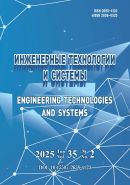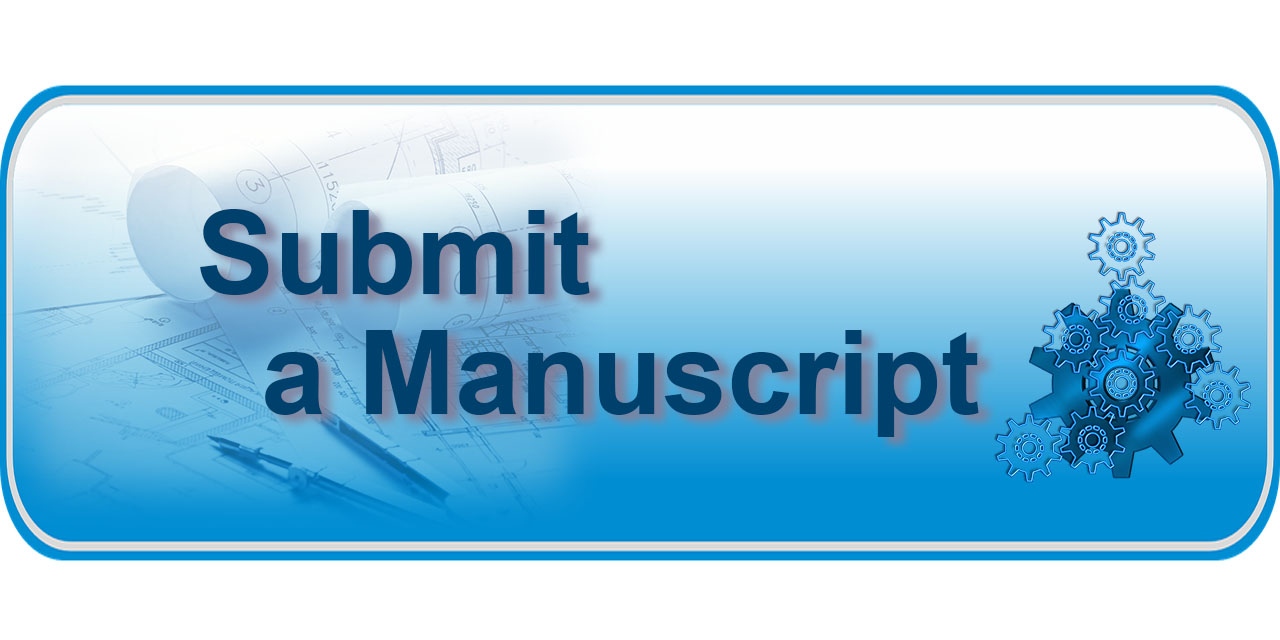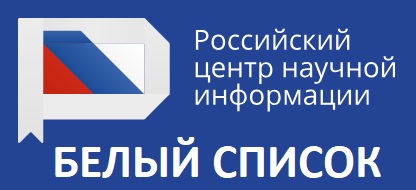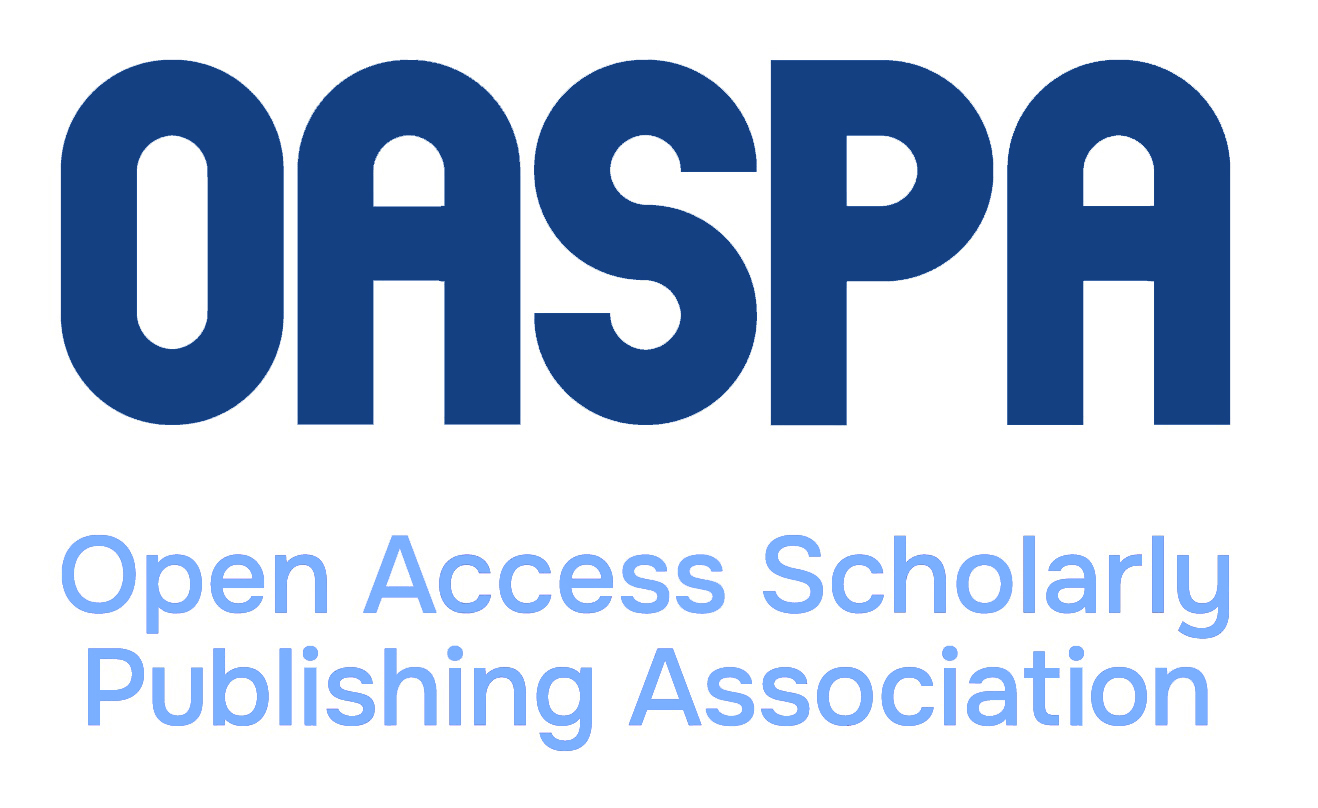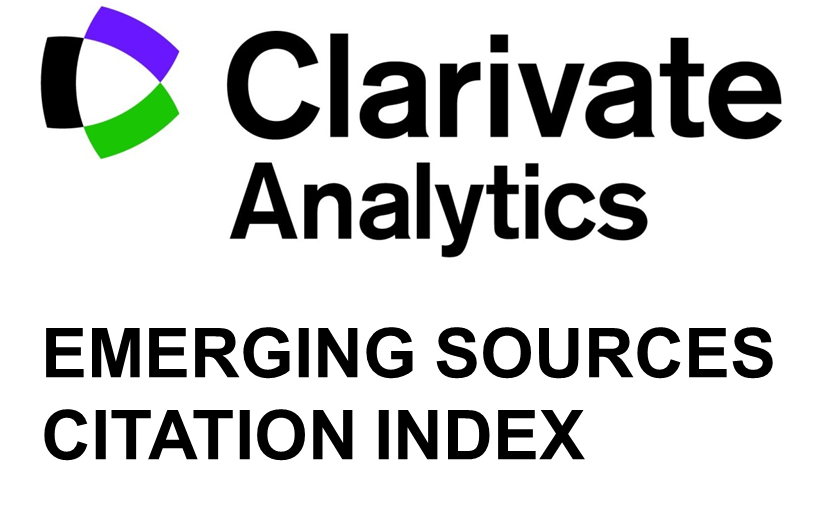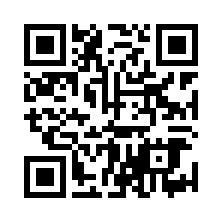Licensing contract
All relations of “Engineering Technologies and Systems” journal with authors concerning copyright and processing of personal data are regimented by terms of the licensing contract (download).
Consent (download)
|
|||||||||
|
|||||||||
- Details
- Hits: 3417
Organisation of peer review
1. Review is the process of evaluative analysis of a scientific article submitted for publication in the Journal. A review comprises an independent written scientific work carried out by experts in the same subject area as that to which the reviewed work belongs.
2. The mandatory review comprises the primary documentation of the examination conducted by the Editorial Board to determine the quality and conformity of the material with the scientific and thematic focus of the Journal.
3. The Journal reviews all materials submitted to the Editors corresponding to the format and subject matter, with a view to their expert evaluation.
4. Leading experts in the field of the peer-reviewed materials, who have published on a similar topic in the last three years, are invited to review articles.
5. A reviewer cannot be the author or co-author of the work under review. Manuscripts may not be reviewed by employees of the same institution where the author works or studies in postgraduate or doctoral programs.
6. The Journal uses double-blind review of submitted manuscripts. This means that the identities of reviewers and authors are concealed from each other throughout the review process. Any correspondence between the reviewer and the author takes place electronically via the Journal’s website.
7. The submission of an article for review is notified by a letter signed by the head of the Editorial Board, in which the deadline for submitting the review (typically three weeks) is indicated. This period is further monitored. In some cases, the reviewer is also sent a memo about the rules for writing reviews.
8. Based on the analysis of the article, the reviewer decides: a) to recommend the manuscript for publication without revision or with revision; b) to forward for additional review; c) to reject the manuscript for publication. The compiled review is submitted to the Editorial Board and its conclusions are recorded in electronic form.
9. The Editorial Board sends the results of the examination to the authors of the submitted manuscript.
10. In the case of an author disagreeing with the comments of the reviewer, his or her reasoned statement will be considered by the Editorial Board.
11. Following revision based on the comments of the reviewer, the article is sent for re-review at the discretion of the Editorial Board.
12. Reviews are stored in the Journal’s Editorial Office for five years and sent to the Higher Attestation Commission of the Ministry of Education and Science of the Russian Federation on request.
- Details
- Hits: 6816
ORCID (Open Researcher and Contributor ID)
The Association of Scientific Editors and Publishers in the methodological recommendations advise the authors to advance their articles before the publication. Much attention is paid to identifiers. In particular, ORCID ID allows accurately identifying the author and avoiding confusion in case of identical names. The personal area in the ORCID system also facilitates the process of tracking the author's publications.
The registration process is free. It takes a few minutes in many languages.
Instructions for registering in ORCID
- Details
- Hits: 4385
Article submission guidelines
The authors, in retaining the copyright of the work, agree with the Creative Commons 4.0 license and grant the Journal the right to publish the work for the first time.
The authors retain the right to enter into separate contractual arrangements concerning the non-exclusive distribution of the published version of the work (for example, placing it in an institute's repository, publishing it in a book), with reference to its original publication in the Journal.
The authors have the right to upload their work online (for example, in an institute's repository or personal website) before and during the review process and following publication by the Journal.
The original of the article is formatted in accordance with the Requirements of the Journal “Engineering Technologies and Systems” (hereinafter referred to as Requirements, see Appendix 1) and is to be transmitted to the Editorial Board in electronic form together with any accompanying documents.
In submitting an article, the authors guarantee the compliance of the manuscript with the following criteria:
– The manuscript has not been previously published;
– The manuscript has not been submitted for consideration and publication in another journal;
– All authors agree with publication in the Journal;
– There are no conflicts of interest;
– There are no incorrectly- or un-acknowledged borrowings in the manuscript;
– The manuscript provides complete Internet addresses (URLs) for links where possible;
– The organisation in which the study was carried out has given its consent (explicit or implicit) for publication;
– All citations are formatted correctly and sources are indicated for tables and figures (unless otherwise indicated, it is assumed that the tables and figures were created by the author).
The Editorial Board checks the manuscript for compliance with the Requirements. If a discrepancy is found, the author is invited to format the article according to the current rules. The Editorial Board reserves the right to reject articles submitted for publication and does not enter into correspondence with the authors of rejected articles. If the authors refuse to revise the article in accordance with the requirements of the editorial board, the article will be withdrawn from publication.
The manuscript is to be prepared in digital format using a software program.
If the paper complies with the Requirements, the Editorial Board forwards the manuscript to the reviewer.
The received manuscript will be sent for peer-reviewing. You can recommend reviewers who are highly academically qualified in the subject area of the article in question. The proposed candidates should not be co-authors of the team of paper’s authors or be from the same institution.
- Details
- Hits: 6373
Instruction to authors
1. Original scientific articles written in Russian and English are considered for publication. These should correspond to the profile of the Journal and reflect the results of the authors' original scientific research. The optimal volume of an article is 4,000-6,000 words. Submission to the editorial office of previously published articles or articles sent for publication to other journals is not allowed. In the event of simultaneous submission of a manuscript to different journals, the published article will be retracted (withdrawn from print). Monitoring of unauthorised citation is implemented using Antiplagiat and CrossCheck systems. In case of detection of multiple borrowings, the Editors will act in accordance with the COPE rules.
2. Particular attention should be paid to the quality of translation. It is desirable that this be performed by a native speaker of English.
3. The title of the article should briefly (no more than 10 words) and accurately reflect the content of the article, the subject matter and the results of the conducted research. It is necessary to invest in it the content, scientific interest and uniqueness of the work of the author(s). The title is to be provided in Russian and English.
4. The abstract performs the function of an expanded title and informs readers about the article's content. It should comprise the following sections:
- The Introduction formulates a problem and the purpose of the research.
- Materials and Methods. This section specifies what has served as material for the analysis and describes the research techniques used.
- Results. This is the main section, which aims to confirm or reject a working hypothesis (or hypotheses) by means of analysis, synthesis and elucidation of data.
- Discussion and Conclusions. In this part, the results are to be briefly summarised and the main directions for further research indicated.
The sections of the abstract should be highlighted with the appropriate subheadings and the relevant information presented in these sections. The recommended abstract volume is 200–250 words. The abstract is to be provided in Russian and English.
5. Keywords consist of the search terms used by all bibliographic databases to search for scientific articles by keyword. For this reason, the keywords should reflect the main statements, achievements, results and terminology of scientific research. The recommended number of keywords is 5–10. The keywords are to be provided in Russian and English.
6. Acknowledgments. In this section, mention should be made of people who helped the author to prepare the article and any organisations that provided financial support. Expressing gratitude to anonymous reviewers is considered good form. The acknowledgements are to be provided in Russian and English.
7. The main text of the article is to be presented in Russian or English according to a specific sequence:
- Introduction;
- Literature Review;
- Materials and Methods;
- Results;
- Discussion and Conclusions.
Any relevant subheadings are to be allocated to these sections.
- The Introduction (1–2 pages) must contain the formulation of a scientific problem, stating its relevance, connection with the most important tasks that need to be solved and its importance for the development of a particular branch of science or practice. The introduction should contain information that will allow the results of the study presented in the article to be and evaluated and understood. The author must first of all declare the general research topic and identify problems that have not been solved in previous studies, which this article is intended to solve. In addition, this section expresses the main idea of the publication, which may differ significantly from contemporary ideas about the problem, as well as complement or deepen existing approaches to it; attention is drawn to the introduction of new facts, conclusions, recommendations and patterns into scientific circulation. The purpose of the article follows from the formulation of a scientific problem.
- Literature Review (1–2 pages). Here it is necessary to outline the principal contemporary studies and publications on which the argument relies, state current views on the problem, underline difficulties in developing the topic and highlight unresolved issues within the main problem to which the article is devoted. 20–40 sources should be cited, at least some of which are written in English, and the views of the authors compared. It is important to carry out a comparative analysis that cites existing publications on the stated issues.
- Materials and Methods (1–2 pages). This section describes the process of organising the experiment, the methods applied and any equipment used (including software). It should provide detailed information about the object of study, indicate the sequence of research and justify the choice of methods used (observation, survey, testing, experiment, laboratory experience, analysis, modelling, etc.).
- Results.. In this part of the article, analytical and statistical materials should be systematised. The results of the study should be described with sufficient degree of completeness so that the reader can trace its stages and assess the validity of the conclusions made by the author. This is the main section, the purpose of which is to confirm or repudiate the working hypothesis (hypotheses). If necessary, the results should be confirmed by illustrations (tables, graphs, drawings) that represent the source material or evidence in a compact form. It is important that the visual information does not duplicate information already given in the text. The results presented in the article should be compared with previous works in this area both by the author and other researchers. Such a comparison will additionally reveal the novelty of the work carried out and give it objectivity. The results of the study should be summarised, but at the same time contain enough information to assess the findings. The decision to select the particular data for analysis must also be justified. All titles, captions and structural elements of graphs, tables, charts, etc., are to be provided in Russian and English.
- Discussion and Conclusions. The final section contains a brief formulation of the research results and summarises the main thoughts of the main part of the work. Any repetitions of the presented material are better paraphrased here in a form that differs from that appearing in the main part of the article. In this section it is necessary to compare the obtained results with the purpose indicated at the beginning of the work. In the conclusion, the results of the understanding of the topic should be summarised along with conclusions, generalisations and recommendations arising from the work. In addition, the practical significance of the results should emphasised along with a discussion of the main directions for further research. It is desirable to include in the final part of the article attempts to forecast the development of the issues considered.
8. List of references. The Vancouver Citation Style is adopted throughout the Journal (references in brackets in-line with the text, full bibliographic description of the source in the list of references in the order of mention in the text of the article). It is necessary to refer first of all to original sources from scientific journals included in the major global citation indices. It is advisable to use 30–40 sources. Of these, at least 20 should be from the past three years and at least 15 from foreign (i.e. non-Russian) sources. It is essential that the link to the source be correctly formatted. The authors' names, journal (email address), year of publication, volume (issue), number, pages where the cited information may be found, as well as DOI or URL should be indicated. A reader should be able to find the specified source in the literature as quickly as possible. References to articles accepted for publication but not yet published should be marked with the words "in press"; authors must obtain written permission to reference such documents and confirm that they have been accepted for publication. Information from unpublished sources should be marked with the words “unpublished data / documents”; authors should also receive written confirmation of the use of such materials. The list of references is to be provided in Russian and English.
The list of references includes only peer-reviewed sources (articles from scientific journals) used in the text of the article. If referring to an article published in a socio-political newspaper, a text presented on a website or in a blog, as well as material from a textbook or dissertation, you should put the source information in footnotes.
Bibliographic Description Examples (Vancouver Style)
Articles in scientific journals
Tennakoon R.B., Bab-Hadiashar A., Cao Z., et al. Robust Model Fitting Using Higher than Minimal Subset Sampling. IEEE Transactions on Pattern Analysis and Machine Intelligence. 2016; 38(2):350-362. (In Eng.) doi: https://doi.org/10.1109/TPAMI.2015.2448103
Zheleznov D.V., Tarasov E.M., Isaycheva A.G., Mikheeva T.I. [Development of the Learning Classifier of Rail Lines States with Multivariate Informative Features]. Trudy SPIIRAN = Works of St. Petersburg Institute for Informatics and Automation of the Russian Academy of Sciences. 2017; 50(1):32-54. (In Russ.) doi: https://doi.org/10.15622/SP.50.2
Fedyaeva O.N., Vostrikov A.A. Destruction of Hazardous Organic Substances in Supercritical Water. Sverkhkriticheskiye flyuidy: teoriya i praktika = Supercritical Fluids: Theory and Practice. 2012; 7(1):64-88. Available at: http://scf-tp.ru/articles/2012_01/download/scf-tp_v007_01_2012_ pp_64-88.pdf (In Russ.)
Books and monographs
Hartl M. Ruby on Rails tutorial. 3rd ed. Addison-Wesley, 2015. 664 p. (In Eng.)
Dougherty G. Pattern recognition and Classification: An Introduction. New York: Springer; 2013. 207 p. (In Eng.)
Article / chapter in the book
Wigfield A., Cambria J. Expectancy-Value Theory: Retrospective and Prospective. In: T.C. Urdan, S.A. Karabenick (Eds.) The Decade Ahead: Theoretical Perspectives on Motivation and Achievement (Advances in Motivation and Achievement). Bingley: Emerald Group Publishing Limited; 2010. Vol. 16, part A. p. 35-70. (In Eng.) doi: https://doi.org/10.1108/S0749-7423(2010)000016A005
Patents
Sumanov A.I. [Hydrotester]. Patent 123,478 Russian Federation. 2012 December 27. 5 p. Available at: https://www1.fips.ru/registers-doc-view/fips_servlet?DB=RUPM&DocNumber=123478&TypeFile=html (accessed 10.07.2021). (In Russ.)
Ionov P.A., Senin P.V., Zemskov A.M., et al. [Development of Software for the Test Bench of the Technical Condition of Volumetric Hydraulic Drives]. Patent 187,833 Russian Federation. 2019 March 19. 9 p. Available at: https://www1.fips.ru/registers-doc-view/fips_servlet?DB=RUPM&DocNumber=187833&TypeFile=html (accessed 10.07.2021). (In Russ.)
9. Information about authors. Full surname, name and second names of the authors; official name of institution without abbreviations, address of institution (it is required to indicate all the author’s work places where the research was performed (permanent place, place of project implementation, etc.)); detailed information about the authors: scientific degree, title, position, ORCID, Researcher ID, Scopus ID, Author ID in the Russian Index of Science Citation; e-mail, phone, postal address for the author's copy. Information about authors is to be provided in Russian and English.
10. Contribution of authors. At the end of the manuscript, authors should include notes, which explain the actual contribution of each co-author to the work. The procedure for specifying the authors and co-authors of the article is consistent with them independently. Information about contribution of authors is to be provided in Russian and English.
11. Information about conflicts of interest. The article should indicate a real or potential conflict of interest. If there is no conflict of interests, then you should write that “the author declares that there is no conflict of interests”.
12. Supporting documents:
– Expert opinion on the possibility of publishing the materials of the article in the open press (mandatory for articles on technical specialties, on the rest is on request of the Editorial Board) (Appendix 2).
– License agreement (Appendix 3).
– Consent.
13. Manuscript Format Guidelines.
1) The manuscript should be typed in the Microsoft Word text processing program for Windows (.doc, .docx, .rtf.): sheet size – A4, Times New Roman font, font size — 14, line spacing — 1.5. Manual hyphenation is not allowed. It is forbidden to use double spaces in the text, as well as to indent (red line) using spaces.
2) Formulas are typed by combining the main font and the Symbol font (exception for fractions, sums, square root) in Microsoft Equation 3.0 (Formula Editor in Microsoft Word) or Math Type 6. Latin symbols in formulas and notation (both in the text and in the figures) typed in italics. Formulas are numbered in parentheses. Only those formulas and equations referenced in the following presentation should be numbered.
3) All titles, signatures and structural elements of graphs, tables, charts, etc., are to be provided in Russian and English.
4) Figures can be presented in raster or vector format with a resolution of at least 300 dpi. They should allow text editing and resizability. All graphic data are placed in the text of the article, as well as sent additionally as separate files. Diverse illustrations should be brought to a single style of graphic performance, while respecting the uniformity of their design. Graphs, charts and diagrams must be drawn up in Microsoft Excel.
- Details
- Hits: 8107








